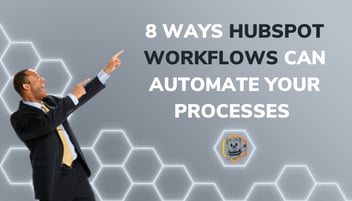
How to Win Big with HubSpot Lead Scoring
Setting up lead scoring in HubSpot allows you to tailor your outreach to focus on the best and most appropriate leads that come your way. By setting up lead scoring, you can put low-quality leads on the back burner while channeling more outreach to high-quality leads. The process is easy to set up, completely customizable, and acts as a powerful platform to launch automations from. This article provides an overview of setting up the lead scoring process.
What is Lead Scoring?
If you’re running a HubSpot account that receives a decent amount of leads, you probably have some sort of idea of which types of leads are more likely to result in a lucrative deal. As such, you probably focus more marketing efforts on obtaining high-quality leads. Before you can set up lead scoring in HubSpot, you need to compile a list of properties to assign scores to. After compiling the list, assign scores to each property. See an example of a lead scoring list below.
|
Property |
Value | Score |
| Industry | Security | 15 |
| Industry | Accounting | 10 |
| Industry | IT | 5 |
| Revenue | Above $5mil | 20 |
| Revenue | Below $1mil | -10 |
Each property and value should have an assigned score, whether it be negative or positive. The score itself is relatively arbitrary, so just assign values that make sense to your business operations and past experiences with different types of leads. Any type of score benchmark that a lead needs to hit will be set by you, so feel free to play around with the scoring criteria to make sure that it matches up with your own goals.
Keep in mind that scoring is not always set in stone. As contacts’ properties change, their scores do as well. Using the table above as an example, if a company’s revenue falls below $1 million, its associated contacts will be docked 10 points. For leads in a longer sales process, this can be helpful as their needs can and do change over time. Also, it’s possible to set up scores that are based on time-sensitive activities. For instance, you can set up a criterion that assigns points based on how many times a user has visited a web page in a certain time frame. So if that lead hasn’t viewed a page within the past 30 days, their score can go down. Using time-sensitive scoring criteria can add another active layer to determining who is and is not a high-quality lead.
Building the Scores
After compiling your list of scoring criteria, setting up lead scoring is relatively simple. To set it up, navigate to Settings > Properties > HubSpot Score. From there, edit the HubSpot Score property to match your scoring criteria. This process is very straightforward. Assign a score, then select the property that matches up with it. You can add as many as you’d like, both positive and negative. The important thing to remember is that each property needs to have its own score. Adding multiple properties to one score will make it so that each lead has to have all properties in the score at the criteria level in order to assign scores properly. This can work in some circumstances if leads are only coming into the portal through forms with required fields, but missing information can cause lapses in scoring if the criteria are set up improperly. Once the criteria are set, and their scores are designated, each contact in your portal will automatically be assigned a score based on their properties.
Automating the Process
From here, you can use the score to set up any number of automations to reach the right leads. By setting up a workflow that triggers based on a certain score, you can tailor your marketing and outreach efforts to better serve high-quality leads. For example, creating a simple workflow that labels leads as hot or cold allows you to view and group different segments of leads at a glance. Building a workflow that sends different marketing emails based on different scores allows you to keep everyone in a nurturing flow while still focusing on higher-quality leads. Overall, using a lead score as a workflow trigger is a smart and effective way to improve and customize your outreach.
To learn more about lead scoring, check out this quick HubSpot Academy course!
Wrapping Up
Need support in building lead scoring workflows or any HubSpot tasks? Try a free 7-day trial of HIVE Hub! We take all the HubSpot heavy lifting off your plate and make sure things are done right — the first time.

|
Why use a HubSpot Partner to help? Workflows can get complex. There are a lot of benefits to using a HubSpot Partner to set up automation processes. Expertise and Experience: HubSpot partners are certified professionals who possess extensive knowledge and experience in using the HubSpot platform. Customization and Personalization: A HubSpot partner can customize workflows to match your unique business requirements. Faster Implementation: HubSpot partners are well-versed in workflow creation and can efficiently implement automation processes. Cost-Effectiveness: While there may be an upfront investment in hiring a HubSpot partner, their expertise can save you valuable time and resources in the long run. By avoiding trial and error, you can ensure that your workflows are well-designed from the start, leading to improved efficiency, better customer experiences, and a higher return on investment. Contact us to learn more about how using a fractional HubSpot admin service like HIVE Hub can benefit your organization. |







![How to Create HubSpot Forms [Speed to Lead Ep. 2]](https://blog.gohivehub.com/hs-fs/hubfs/HIVE%20Hub/HubSpot%20Hacks.jpg?width=352&name=HubSpot%20Hacks.jpg)